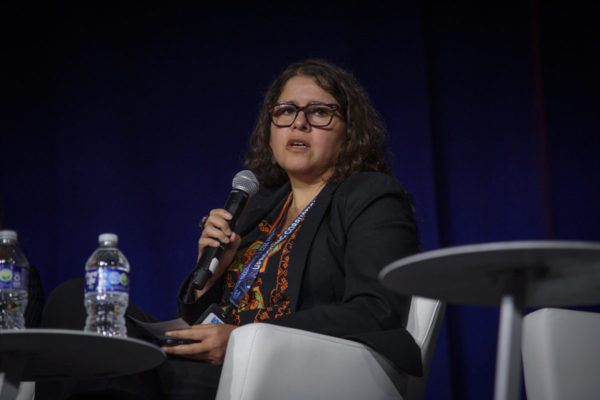From illegal logging and mining sector wrongdoing to poaching and the trade in illicit wildlife, corruption has a significant impact on the environment and conservation efforts.
But according to experts at the International Anti-Corruption Conference in Washington, DC, while most conservationists recognise that corruption exists in the sector, many are unaware of how it can impact them personally.
“When you talk to an environmental defender about corruption, they say yes bribery is an issue, but they don’t know the specific risks that corruption poses,” said Joachim Stassart from Transparency International Brazil.
Brazil has seen widespread corruption in the environment sector – particularly with regard to high levels of deforestation – with a WWF study in 2021 revealing that 94 per cent of deforestation in the Amazon and Cerrado areas might be illegal. Globally, the global illicit trade in the forestry sector is estimated to be worth up to US$152 billion.
Corruption not only inhibits environmental advocates’ efforts, but also puts them at risk. Many activists from communities and whistleblowers have been killed, injured and threatened around the world for speaking out against environmental corruption. A global analysis on the situation released by Front Line Defenders indicates that of the 358 defenders killed in 2021, nearly 60 per cent were land, environment and indigenous rights defenders.
“Whistleblowers and environmental defenders’ lives are put at risk because of the high level of impunity which is a result of corruption,” said Brice Böhmer, the climate and environment lead at Transparency International.
Corruption in the environmental sector also robs countries of revenues as the funds are directed to individuals, groups or corporations instead of benefiting citizens. According to figures from INTERPOL and the UN Environment Program, at least US$91 billion worth of natural resources are stolen annually, although the figure could be as high as US$259 billion.
“Corruption is development in reverse because all these resources that could help improve lives, build hospitals or schools are being directed to benefit a few individuals,” said Jennifer Lewis, deputy director at the USAID Anti-Corruption Task Force, noting that there is a need to connect the dots on what is working and to collaborate across fields. “Corruption has to be tackled through sectors because what happens in water also happens in health,” she added.
Part of the reason illegal wildlife crime flourishes is because of corruption that goes unnoticed and unchecked, with countries with high rates finding the problem undermines efforts to conserve or protect the environment.
“One of the ways this plays out is through political players or leaders [that] issue permits in opaqueness,” said Gabriel Sipos, an anti-corruption coordinator for TRAFFIC, a non-governmental organisation working on the trade in wild animals and plants.
The fight against corruption in the sector is also hampered by the lack of legislation in some countries. Madagascar, for instance, a country with some of the rarest tortoises on the planet, has seen a sharp decline in the tortoise population due to an insatiable demand from the exotic pet market.
According to Simon Rafanomezantsoa from the WWF Madagascar office, while researchers did diagnostics on the problems of the sector and who is involved, they need better laws to fight the problem.
“Civil society is working on some proposed laws, but it is not easy to get them passed and implemented,” he added.


